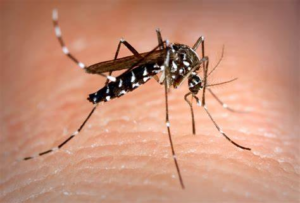Autoimmune diseases: The facts behind the many different types of immune-deficiency disorders
3 min read
An autoimmune disease is a condition arising from an abnormal immune response to a normal body part in which the body attacks and damages its own tissues.
The immune system
In normal cases, when an intruder invades our body the immune system protects us by identifying and eliminating the attacker. However, if the immune system is deficient it can actually end up attacking healthy cells, thus decreasing the body’s ability to fight infection.
Population affected by autoimmune disease
According to latest statistics, autoimmune diseases affect approximately 3 to 5% of the world’s population.

Origin of autoimmune diseases
Many theories exist as to why autoimmune diseases occur. The basic notion is that autoimmune diseases are thought to arise from an overactive immune response of the body against substances and tissues normally present in the body. External environmental factors may trigger a genetic predisposition to disease, cause changes to hormone levels, or compound low immunoregulatory control.
Rise in incidences
Recorded incidences of autoimmune diseases have increased over the last 40 years. Future predictions indicate that these diseases will affect between 15 and 20% of the world’s population.
Many different types of illnesses
There are more than 30 illnesses caused by autoimmunity, each of which is identified by different symptoms and attacks specific areas of the body.
Every part of the body can be affected
Autoimmune diseases can affect nearly every part of the body including heart, brain, blood vessels, the nervous and digestive systems, muscle and skin tissue, eyes, joints, lungs, kidneys, and various glands.
Inflammation
Depending on the condition, classic symptoms of an autoimmune disease include inflammation, painful rashes, and swelling.
Stiff and painful joints
Rheumatoid arthritis or psoriatic arthritis are common examples of autoimmune disease. Sufferers complain of stiff, painful joints and restricted function.
The thyroid gland
If it affects the thyroid gland, as in Graves’ disease or thyroiditis, the condition can cause fatigue, weight gain and muscle pain.
Skin conditions
If the attacks affect the skin, as in systemic sclerosis, vitiligo, and systemic lupus erythematosus, the disease can cause wounds, blisters, and color changes to the epidermis.
The whole body
There are many examples of autoimmune diseases, which can attack various regions of the body as well as specific glands and organs.
Increased hygiene
Many hypotheses exist as to why autoimmune diseases appear and how they may be treated. Several are controversial, including the suggestion that just practicing better hygiene habits can reduce instances of immune system disorders.
Infections
Another controversial opinion is that it’s the infection itself that causes an autoimmune disease and not the other way round.
How it begins
While it’s not known exactly what triggers the onset of autoimmune disease, there are three basic components that kick-start a disorder:
Genetics
The genetic predisposition of the individual can determine how the disease will manifest itself.
Environment
Environmental factors also play an important part in the development of the disease.
An imbalance of cells
And it is also important to remember that an imbalance of cells within the immune system can trigger an autoimmune disease.
Diagnosis
Diagnosis of autoimmune diseases is made with blood tests that identify autoantibodies.
Treatment
Treatment of these diseases is based on reducing immune system activity through the administration of immunosuppressive drugs (for example, corticosteroids).
Immunosuppression
However, it is not possible to carry out immunosuppression of undesirable antibodies alone. The patient therefore has to undergo general immunosuppression, leaving them more exposed to infection by other elements of the disease.
Allergies
Allergies are not autoimmune disorders and it’s important not to confuse the symptoms of an allergy with those of an autoimmune disease.
Allergies and autoimmune disease
While studies have identified a link between allergies and the development of an autoimmune disease, the two disorders are completely different.
Different treatment
There is some similarity in treatments for allergies and autoimmune diseases, but the effectiveness of drugs varies. Further, allergies do not attack the body’s own tissues.


